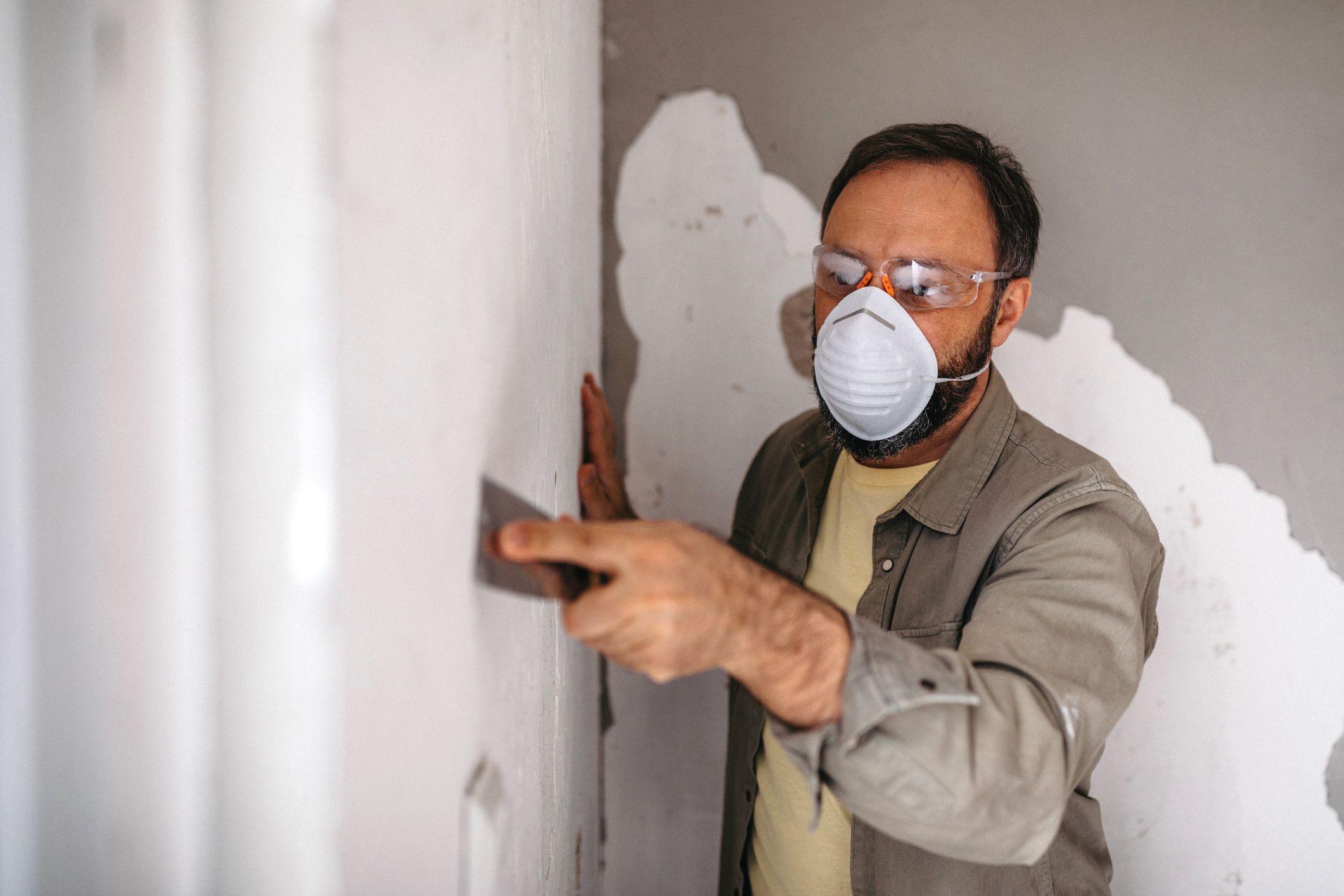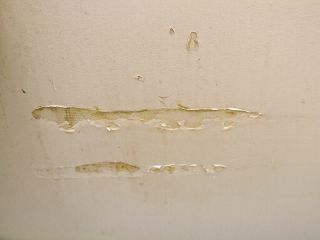Crucial Tips for Effective Drywall Fixing and Installment Methods
Effective drywall repair service and setup calls for a cautious approach. Recognizing the types of drywall and having the right tools is crucial. Precise measurements and proper strategies can greatly influence the end result. Several overlook crucial steps like taping and fining sand, which can make or damage the final appearance. As jobs advance, usual difficulties may emerge that need attention. Checking out these pointers can result in an extra sleek and effective coating.
Understanding Various Sorts Of Drywall
Understanding the numerous kinds of drywall is necessary for any successful repair work or setup task. Drywall, frequently called plaster board, comes in a number of selections tailored for particular applications. Criterion drywall is the most extensively used kind, ideal for basic indoor walls and ceilings. Moisture-resistant drywall, commonly green in shade, is made for locations vulnerable to humidity, such as kitchen areas and washrooms. Fire-resistant drywall, normally colored pink or purple, is crafted to hold up against higher temperatures and is usually made use of in garages or near heaters. Furthermore, soundproof drywall helps lower sound transmission, making it ideal for multi-family homes or tape-recording studios. Specialized drywall, like cement board, is used in wet areas like showers or bathtub borders. Recognizing these types helps in picking the right material for each and every task, guaranteeing toughness and effectiveness out of commission or new setups.
Crucial Tools for Drywall Fixing and Installation
Having the right tools is important for effective drywall repair work and setup. A top quality utility blade is essential for reducing drywall sheets specifically. A drywall T-square assists assure straight sides, while a taping blade is necessary for applying joint substance efficiently over joints. Additionally, a drywall saw permits eliminating damaged areas or suitable drywall around components.
For hanging drywall, a power drill with drywall screws is crucial, as it makes it possible for safe and quick installation. A level is also crucial to confirm that the drywall is straight and appropriately aligned. A sanding block or post sander is necessary for raveling joint substance once it has dried out. A measuring tape is essential for accurate measurements, avoiding waste and making sure a correct fit. Geared up with these tools, people can deal with drywall projects properly, leading to professional-looking outcomes.
Step-by-Step Guide to Fixing Holes and Cracks
When dealing with holes and fractures in drywall, having the right devices and materials is crucial for a successful repair. This overview describes the necessary things and gives a clear, detailed procedure to efficiently restore the surface. Comprehending these aspects will assist assure a seamless finish and lasting results.
Tools and Products Needed
A well-equipped toolkit is essential for effective drywall fixing and installation. Secret devices consist of an energy knife for cutting drywall, a tape step to ensure accurate sizing, and a drywall saw for bigger holes. A putty knife is essential for applying joint substance smoothly, while a fining sand block or post sander aids accomplish a seamless surface. For patching, a roll of fiberglass harmonize tape or paper tape is needed to enhance joints. In addition, a drill and screws are needed for securing new drywall pieces. Crucial products contain joint substance, guide, and paint to complete the fixing. Having these devices and products handy ensures a smoother, a lot more effective repair procedure, yielding professional-looking results.
Repair Work Process Steps
Fixing openings and splits in drywall requires a systematic approach to ensure a seamless coating. First, the area surrounding the damage needs to be cleaned completely to get rid of dirt and particles. Next off, for tiny cracks, a putty knife is used to use a joint substance evenly over the location. For larger holes, a spot is necessary; the damaged area is removed, and a brand-new item of drywall is fitted in location, protected with screws. As soon as the spot is in placement, joint compound is used to mix the sides. After drying out, fining sand the location smooth is necessary. Ultimately, the fixed surface ought to be topped and repainted to match the bordering wall surface, making certain an inconspicuous repair work.
Methods for Setting Up Drywall Panels
Mounting drywall panels calls for mindful preparation and specific execution to ensure a smooth and expert surface. Initially, it is important to measure the wall surface space accurately and cut the panels to fit, here making sure that they line up with the studs. Positioning the panels flat is typically recommended, as this can enhance the architectural integrity and lower the number of seams.
Using drywall screws, installers should protect the panels every 16 inches along the studs, guaranteeing a company hold. It is important to prevent overdriving the screws, which can harm the paper surface. For edges and corners, utilizing an energy knife enables tidy cuts and a tight fit.

Finishing Touches: Taping, Mudding, and Fining sand
When the drywall panels are firmly in place, the following important step entails the finishing touches of taping, mudding, and sanding. Insulation is important for producing a seamless change in between panels and hiding joints. A high quality drywall tape, either paper or fiberglass mesh, ought to be used over the seams, guaranteeing it sticks appropriately to the mud that will certainly be applied following.
Mudding, or using joint compound, adheres to the taping procedure. This compound fills up voids and ravel the surface area. A very first coat ought to be applied generously, feathering the edges to blend with the drywall. After the first coat dries, subsequent layers might be required for a remarkable finish.
Ultimately, fining sand is essential to attain a smooth surface. A fine-grit sandpaper needs to be used to carefully ravel any type of flaws. Care should be taken to stay clear of over-sanding, which can harm the drywall - Interior Painting. Effectively implemented, these ending up touches produce a specialist appearance all set for painting
Tips for Preserving Your Drywall After Installation
Maintaining drywall after setup is crucial to protecting its appearance and structural integrity. Normal cleaning is required; dust and dust can gather, so mild cleaning with a wet towel is advised. House owners should also check for any type of indications of dampness or mold, particularly in high-humidity locations like washrooms and cooking areas. If any kind of damages takes place, it's essential to resolve it immediately to stop further problems.
Making use of furnishings pads can help stop scrapes or dents from hefty things. Additionally, painting the drywall with a high-quality, washable paint provides an added layer of defense and makes future cleansing simpler. Prevent using unpleasant cleaners or tools, as these can damage the surface. Keeping a secure interior climate with proper humidity degrees will help protect against deforming or cracking over time. By complying with these tips, one can ensure that drywall remains in excellent condition for years to come.
Frequently Asked Questions
The Length Of Time Does Drywall Take to Fully Dry After Setup?

Can I Mount Drywall Over Existing Drywall?
Yes, drywall can be set up over existing drywall, however it is important to ensure the underlying surface area is protected and properly prepared. This technique can enhance insulation and reduce setup time, though it might add weight.
What Is the very best Way to Soundproof Drywall?
The most effective way to soundproof drywall involves making use of specialized soundproofing materials, such as resistant channels, acoustic caulk, and sound-dampening drywall. These methods efficiently minimize audio transmission in between spaces, boosting total acoustic performance in living rooms.
How Do I Choose the Right Drywall Density?
To choose the best drywall thickness, take into consideration the application and location. Criterion domestic walls commonly use 1/2 inch, while ceilings or specialized areas might require 5/8 inch for extra stamina and soundproofing capabilities.
Exist Eco-Friendly Drywall Options Available?
Yes, green drywall options are readily available. These consist of items made from recycled products, gypsum boards with reduced volatile organic substances (VOCs), and those utilizing sustainable production procedures, supplying environmentally-conscious choices for construction and remodelling projects.
Having the right tools is necessary for effective drywall fixing and installment. For hanging drywall, a power drill with drywall screws is important, as it enables safe and fast setup. Trick devices include an energy knife for reducing drywall, a tape step to assure precise sizing, and a drywall saw for larger holes. Yes, drywall can be mounted over existing drywall, yet it is essential to ensure the underlying surface is safe and effectively prepared. The best means to soundproof drywall involves making use of specialized soundproofing materials, such as durable networks, acoustic caulk, and sound-dampening drywall.